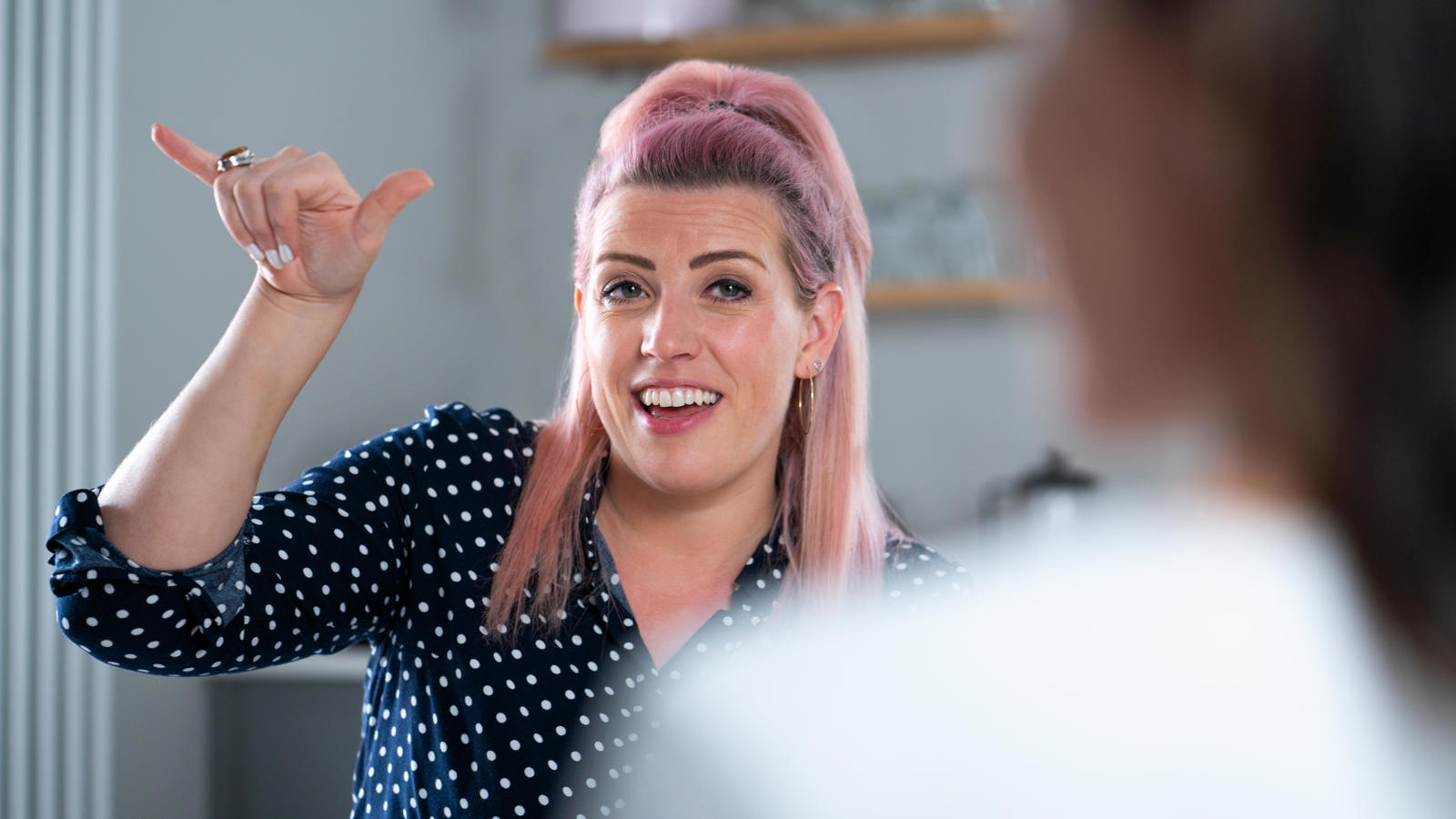
Introduction
We want everybody, from every background, in every place, to have an equal chance to be active and experience the benefits of taking part, volunteering and working in sport and physical activity.
Progress is being made, but inequalities are still present, unjust and negatively impacting opportunities for many.
We need the continued support of passionate and committed sector leaders like you to help achieve a radical change by joining a collective mission to tackle inequalities. Leading the Movement is here to support you to do this.
We know that someone’s demographics, finances, the area they live in and the environment around them can unfairly impact their health, wellbeing, education and life chances. They can also directly impact on their capacity to take part, volunteer, enjoy, access and work in sport and physical activity. We need to change this.
As leaders, you’re likely to be passionate advocates of the power of sport and physical activity and its ability to support and enhance:
- Physical health and wellbeing.
- Mental health.
- Learning, skills development and employability.
- Discipline and personal growth.
- Social connections.
Community cohesion and a sense of pride. - Ambition, inspiration and achievement.
- Economic development opportunities.
We know that tackling inequalities is challenging work. It isn’t just about developing programmes or initiatives, it requires a shift in cultures, policies and practices at every level. Working collaboratively, across the multiple partners and systems that have an influence on people’s lives, is essential. Tackling inequalities needs to be prioritised and part of every engagement, event, recruitment practice, programme and board meeting.
Leaders, at all levels, in sport and physical activity are a powerful force, central to achieving real, sustainable change.
Inequality and intersectionality
The term inequality refers to the state of being unequal, or an imbalance or lack of fairness between different groups, individuals or outcomes. Inequalities are experienced and present in lots of social, health, educational and community structures and contexts and they are largely mirrored in people’s physical activity levels. The Inequalities Metric helps to explains how a person’s characteristics, or other inequality factors, impact their activity levels.
Inequality is experienced by lots of different groups, including:
- Culturally diverse communities.
- People on low incomes.
- People with long-term health conditions.
- Disabled people.
- People with mental health conditions.
- Women and girls.
- Lesbian, gay, bisexual, trans and queer/questioning (LGBTQ+) people.
- People living in rural areas.
- Older adults.
- Refugees, asylum seekers and migrants.
- People who are socially isolated.
- People or communities that are digitally excluded.
- Pregnant women, or parents of children under a year old.
In sport and physical activity terms, we know that people from these groups are more likely to face unfair disparities. They’re often under-served by existing opportunities and under-represented as participants, volunteers and leaders within the sector’s workforce.
Historically, many of our efforts to tackle inequalities have focussed on a single characteristic group or inequality factor. However, a large proportion of the population has more than one inequality factor, these often interconnect and have a cumulative effect, meaning that these people are significantly more likely to experience inequality and notably less likely to be active. We call this concept intersectionality.
When working to tackle inequalities, it’s important for leaders to be aware of, consider and understand the effects of intersectionality to help them account for people’s needs and co-design effective solutions.

Role of leaders
Leadership isn’t about having all the answers; it’s about being curious, asking questions, listening, understanding, being bold enough to challenge the status quo and empowering people to take action.
To successfully tackle inequalities, leaders need to acknowledge they exist and make a meaningful commitment to explore and understand the causes and potential solutions. They also need to ensure their teams prioritise working collaboratively to take action.
For lots of leaders, this information won’t be new. We know your work to tackle inequalities is consistent, ongoing and, in many areas, driving positive change. Sport England is working alongside leaders to be bolder in our shared commitment than ever before, we cannot afford to stand still, we need to move together at pace.
The influence you have, the culture you create and the decisions and actions you take as a leader can make a huge difference, both internally to your organisation and externally with your partners and networks.
Leading internal change
We know that change often starts internally. Without the buy-in and confidence of everyone in your organisation it’s challenging to embed practices in your wider work and communities. When exploring the areas of action below, consider how this looks within your organisation, that could mean policy and cultural shifts, proactive and diverse recruitment, or ensuring equal recognition, treatment and fair pay.
Affecting external change
Working to tackle inequalities that exist externally to your organisation can be harder, as they’re often affected by broader societal factors outside of your control. For example, some groups or areas may have:
- A lack of access to quality infrastructure, including facilities, clubs and community organisations.
- A lack of active travel provision, which limits access to and from activities.
- Limited or no access to appropriate, free or affordable structured and informal opportunities to participate.
- A lack of appropriate signposting or pathways into participation opportunities.
- No or low access to specialised equipment, coaching, mentoring and support services.
- Reduced financial means, unequal or under funding.
- A lack of opportunities or barriers to talent development.
- Limited volunteering opportunities.
- A lack of career progression opportunities.
- Limited or less media coverage.
- Limited or less access to digital platforms.
- A negative experience of biases and stereotyping.
Strong leaders understand and inspire others to take action to address the needs and challenges of the specific communities, networks, localities and contexts they’re leading within.
Achieving change at scale often requires leaders to join forces and drive towards a shared goal as part of a whole-system approach that proactively, rather than reactively, pushes for systemic change based on real-time community needs.
Areas for action
We recognise and appreciate the work many leaders have been doing to advance this conversation and evidence action. Others may be new to the discussion, new to the sector or driven because of a specific incident, personal experience, passion project or professional development opportunity.
Being a leader isn’t determined by job titles or seniority, it’s about wanting to make a difference, creating change, opening up opportunities for more people to live active lives. If you work to tackle these inequalities, or you support the people that do, then you're part of ‘Leading the Movement’.
Leadership isn’t about parachuting in with ready-made solutions, it’s about being curious and taking the time to fully understand the inequalities that exist in your sport, place or sphere of influence, what causes them and then co-designing ways to remove or overcome them.
Explore our whole systems approach page and our Place-based working page for further support on how to identify needs and map out your environments, assets and social networks. Once you’ve done this, you might want to consider some of the following actions:
Advocating for policy and structural changes
Directly influencing investment into infrastructure, providing better access to funding and resources for underserved communities and supporting programmes that promote diversity and inclusion. At a systemic level, this could inform local (or even national) policy changes, direct local government resource allocations or include lobbying for specific progress.
Collaborating and coalition-building
Consider engaging with a broad range of advocacy groups and other leaders to align your efforts and amplify their impact. Take a look at our ‘Partnerships and networking’ page for further insights and information about this.
Creating inclusive policies and practices
Consider revising your internal policies to ensure they align with your strategic priorities, known internal and external conditions and good practice. Advocate for national or sector wide policies to reflect the shared mission.
Breaking down cultural and social barriers
Think about supporting more positive working cultures and environments to challenge biases, stereotyping and taboo conversations to develop safe, inclusive and accessible spaces to work, operate and be active in.
Encouraging diversity in leadership
Through all areas of leadership, delivery and decision making, ensuring people value and promote diversity and embrace people’s different lived experiences, opinions, challenges and skill sets.
Role modelling and representation
Elevating and amplifying the voices of diverse role models across the sector to promote and inspire those from similar contexts or backgrounds to see themselves in leadership positions.
Resource allocating
Ensuring proportionate distribution so, as a minimum, people receive equal support, but at best, groups requiring further support receive that proportionately to reduce the barriers that negatively impact their ability to be active.
Training and education
Providing opportunities to help other leaders and your teams recognise, understand, address and overcome inequalities.
Accountability and transparency
Being unafraid in establishing clear and measurable diversity and inclusion targets and being transparent about your approach and progress with the communities and networks you’re working within.
Leadership traits and behaviours
Leaders taking effective action to tackle inequalities often share key traits that enable them to successfully navigate the complexities of inequality and drive meaningful and lasting change. These include compassion, humility, integrity, courage, decisiveness, resilience, cultural competence and empathy. These characteristics are discussed in greater detail within our ‘Leadership fundamentals’ page.
Further resources
Tackling inequalities is a complex, lengthy and challenging process. It isn’t a linear journey. You don’t have to follow specific steps to make it happen and you don’t have to do it alone.
Leaders, specialists, those with lived experience, community members and out of sector contributors have developed and shared learning, insight and networking opportunities to support the movement, some are linked below.
This is an ever-evolving area of work so if you have a story to tell, or some helpful resources to share, please get in touch leadingthemovement@sportengland.org.
Partnerships and networking Your stories Moving to Inclusion Conditions for tackling inequalities in physical activity – NELP Why 50/50 leadership in sport is so bl**dy obvious! – Women in Sport Race Representation Index – Sporting Equals
